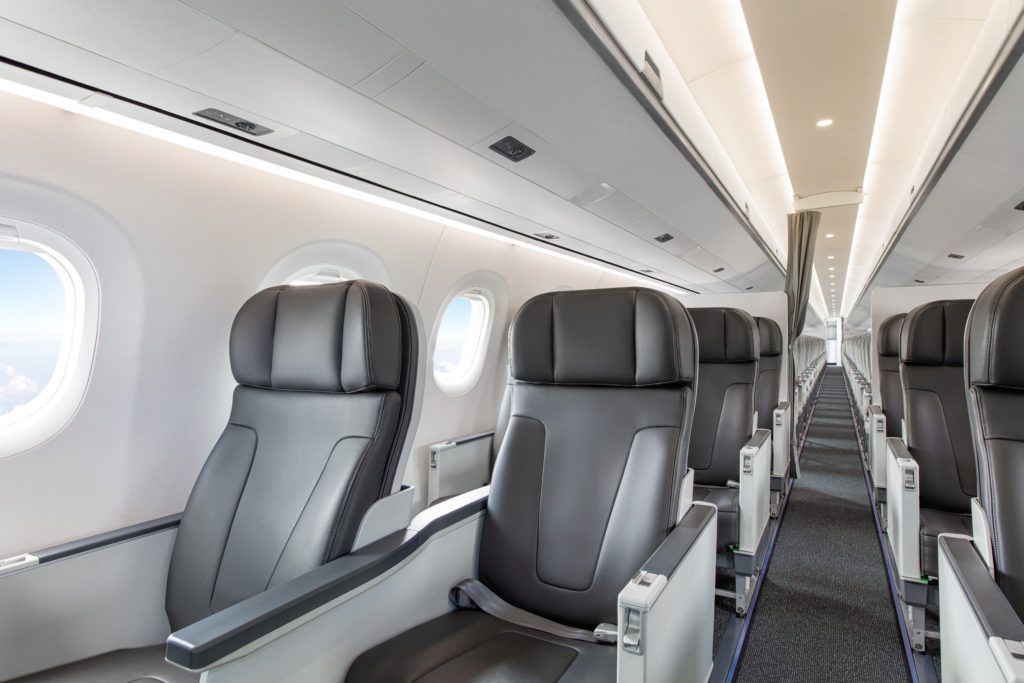To meet our goal to reduce emissions and be a carbon-neutral company, we’re continually improving the way we build our airplanes. Manufacturing the cabins of our E-Jets E2s now uses more sustainable processes and products than before.
Here are some of the ways our E2 cabins have become greener.

Primers and Paints
Compounds derived from Chromium VI (hexavalent chromium) which are commonly found in paints, primers, and surface treatments, are classified as hazardous materials. We use the water-based and chrome-free paint systems on all Composite parts.
On external metallic surfaces (such as the fuselage) we use Chrome VI-free primer and paints. On interior metallic parts (structures), we developed a new water-based primer that reduces Chrome VI compounds by 40%.
We eliminated volatile organic compounds and reduced all associated painting emissions by 75%.
Bonding
We cut volatile organic compounds (VOCs) by up to 93% when we switched to water-based adhesives for interior coatings on walls, bins, dividers, ceilings, panels, galleys and in lavatories.
Toilets
The new toilets on the E2s use nearly half the flush water volume of first-generation E-Jets. The gray water from forward monuments is retained in the waste tank which cuts the overall volume of in-flight gray water discharge. We removed a drain mast which reduced drag and lowered fuel burn. The lavatories have optional touchless faucets that require less water than manual faucets.

Seats
We changed our upholstery supplier. Our new seats don’t use Chromium VI in the leather manufacturing process.
Fire Extinguishers
Emissions from traditional halon extinguishers are known to deplete the ozone layer. We started transitioning to halon-free extinguishers in cabins and lavatories of newly-produced aircraft a decade ago. Our E2s were born with more environmentally-friendly fire extinguishers that are charged with halon replacement agents. They have low global warming potential and no ozone-depleting substances.
Additive Manufacturing
Many parts in the cabin – air conditioning grills, harness protection units, suction toilet flanges, and air ducts – are produced with 3D printers. They cut weight by 40% and waste by 65%.
LED Lighting
We replaced fluorescent lamps and halogen bulbs with low-voltage, no-mercury, longer-lasting, no-radiation, energy-saving LED bulbs.

Carpets
E2 carpets are sourced from recyclable materials using the ECONYL® regeneration system. Instead of using raw fossil materials, E2 carpets are remade from discarded semi-finished, repossessed and shorn carpeting, and even plastic and nylon waste, such as fishing nets, recovered from around the world.

